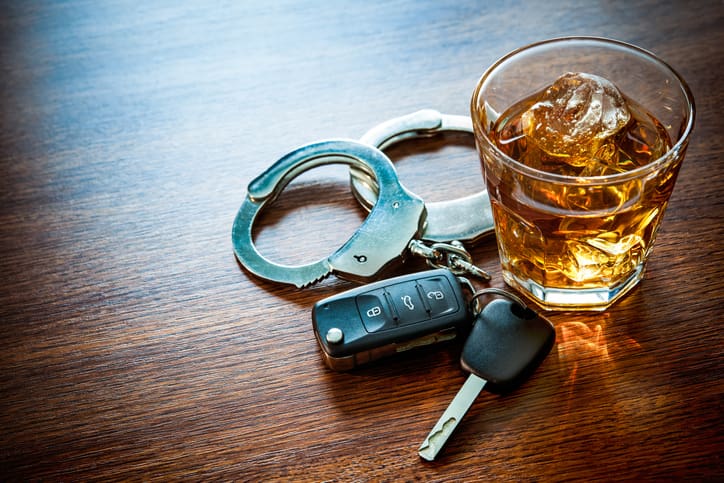It is not an overstatement to say that every week we read about, hear about or Coluccio Law is contacted by the victim of a drunk driver. The statistics are grim. The CDC estimates 29 people die in alcohol-related motor vehicle accidents each day in the United States. According to the National Highway Traffic Safety Administration, one in three traffic deaths in the United States involve a drunk driver. Sadly, every death or serious injury caused by drunk driving is preventable.
One tragic death recently reported in Washington State involved a tow-truck driver who was helping a stranded truck driver load his box truck onto the flatbed of the tow truck. Taking appropriate precautions, the tow truck driver instructed the stranded driver to get out of harm’s way and sit in the passenger seat of his tow truck. As the tow truck driver finished his job, a FedEx semi-truck driver veered into the shoulder of the roadway where he hit and killed the tow truck driver. The FedEx driver was arrested on suspicion of DUI about a half-mile north of where the victim was killed.

Another recent tragedy that resulted in the loss of life occurred when an off-duty Auburn police officer fatally struck a pedestrian after losing control of his vehicle in a neighborhood north of downtown Seattle. After hitting the pedestrian, the off-duty officer was arrested on suspicion of drunk driving. He reportedly smelled of alcohol, slurred his speech and had bloodshot eyes. The police determined that the car had been speeding upwards of 80MPH and drove onto a sidewalk. A judge found probable cause for vehicular homicide.
At the most basic level, one must ask how a police officer or professional truck driver could get behind the wheel of their vehicle after consuming alcohol. An officer’s job is to serve and protect citizens from offenders committing these types of crimes. Tow-truck drivers and other roadside emergency responders work on our roadways to help motorists in need; they face dangers even without the presence of a drunk driver. According to AAA, it is estimated that 24 tow truck drivers are killed on our roadways each year. Statistics and incidents such as these are unacceptable, especially involving law enforcement and emergency responders dedicated to serving the public.
Recommended Article: Prescription Drugs and Impaired Driving: Types, Risks, and FAQs
In Washington State, efforts are being made to curb drinking and driving through legislation and multi-agency coordination. Tactics employed to modify driver behavior include:
- Lowering the legal blood alcohol (BAC) levels, which has been effective in other states;
- Sobriety checkpoints and high visibility saturation patrols;
- Requiring ignition interlocks in repeat offenders;
- Intervention and treatment programs;
- Mass media campaigns;
- License revocation and suspension laws;
- School-based instructional programs.
Last February, Washington State Senate Bill 5982 was introduced making it illegal to drive with a BAC at or above .05%. The bill references Washington Traffic Safety Commission’s recent data spotlight on safety trends from 2019 to 2021, which finds that as traffic safety enforcement has declined, high-risk behaviors, crashes, and fatalities have sharply increased.

Senate Bill 5982 mirrors the change in law Utah made in 2017 when it lowered the legal blood alcohol concentration to .05% from the prior limit of .08%. The National Highway Traffic Safety Administration (NHTSA) released the results of a five-year study on the impact of this Utah law last month. It found the crash rate reduction was nearly 20% through 2019. The study also cited changes in drinking and driving behavior. Between 2018 and 2019, the percentage of drinkers who indicated they make sure transportation (i.e. rideshare, designated driver) is available or refrain from drinking outside their home, more than doubled.
Despite widespread efforts to prevent grievous outcomes, individuals continue to make the choice every day to get behind the wheel after drinking. That decision often leads to losses that are needless and preventable. Characterizing drunk driving incidents as “accidents” is a misnomer. While they are certainly “unfortunate,” they do not happen unexpectedly and unintentionally. They are caused directly by a decision to drink and drive.
Helpful Reading: Eating While Driving – Is it Legal?
Follow these reminders if you drink alcohol:
- Always drink responsibly and do not drive;
- Use ride service or another transportation service;
- Pre-plan a designated driver;
- Make sure you prevent others who have been drinking from driving by arranging alternative transportation;
- Always wear your seatbelt;
- Contact law enforcement when you see a suspected drunk driver.
Coluccio Law is committed to seeing an end to the drunk driving epidemic, and the loss of lives and serious injuries that occur every day. We seek to deter drunk drivers, as well as those who overserve patrons, by holding them responsible for the injuries and fatalities they cause. We have years of experience advising and representing clients who have lost a family member or suffered catastrophic injuries because of a drunk driver. We can help filing an insurance claim or pursuing a civil lawsuit to hold the drunk driver financially accountable.
Recommended Article: Can you Report Reckless Driving



